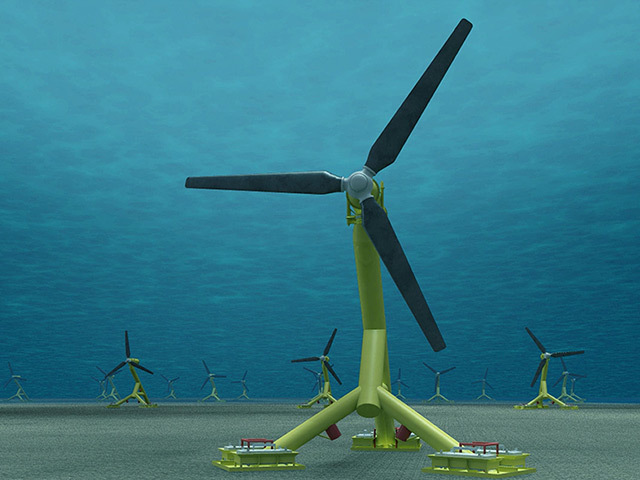
The north of Scotland is set to cash in on the largest tidal power project in Europe, it was claimed last night.
Local MSPs welcomed yesterday’s announcement that work is to start on a demonstration project of up to six turbines in the Pentland firth.
When fully operational, the 86-megawatt scheme in the waters between Orkney and Caithness could generate enough electricity to power up to 42,000 homes – around 20% of the number in the Highlands.
Rob Gibson, SNP MSP for Caithness, Sutherland and Ross, said the MeyGen scheme should prove a major boost to the Caithness economy.
“This is great news from the Scottish Government and shows that it is committed to tidal development in the Pentland Firth that will have a positive effect for the economy in Caithness and further afield,” he said.
“I especially look forward to the role that Scrabster harbour will play in this development and ones to come in the future.”
Mr Gibson said the port has received funds from a variety of sources, such as the European Regional Development Fund, Nuclear Decommissioning Authority, and Highlands and Islands Enterprise.
He said: “The offshore renewables sector was always going to be one of the most important parts to the post-Dounreay economic landscape. It really is in Caithness’s interests that it succeeds and is supported by all.
“This news is a good start and I look forward to further positive news both in wave/tidal and offshore wind which will offer opportunities to ports and business across Caithness and the North of Scotland.”
Liam McArthur, Liberal Democrat MSP for Orkney, said tidal energy has a vital role to play in future energy needs with the waters around the islands offering some of the “most exceptional tidal resources anywhere in the world”.
Meanwhile developing grid connections between the mainland and islands is a top priority, Energy Minister Fergus Ewing told a marine renewables conference yesterday.
And he said that Scotland cannot afford to be “cautious” if it wants to be a leading player in the industry.
The huge cost of installing undersea cables to transport energy produced in the northern and western isles is one of the main blocks to developing commercial renewables schemes on the islands.
Speaking at the Scottish Renewables Marine Conference at Eden Court Theatre in Inverness, Mr Ewing said: “Grid connections must be addressed so the islands can contribute to renewables. Orkney and Shetland have great conditions for renewable energy as a whole so it would be perverse if they could not contribute.
“I’m determined to see the job through so there are connections from each of the island groups. It is one of the top priorities on my list.”
He said grid connections and other challenges to the commercial development of wave and tidal power had to be overcome so Scotland remained as a leading power in the industry.
He said: “As we go ahead there will be more challenges and more difficulties. It’s something that we must take in our stride. In the face of these challenges now is not the time to be overly cautious. This sort of approach is the wrong one and could lead to other countries stealing our lead. We need to turn these obstacles into opportunities.”
He earlier announced permission had been granted to developer MeyGen for the first phase of the biggest tidal power project in Europe, in the Pentland Firth which was designated as one of two marine energy parks in the UK last year.
Recommended for you
